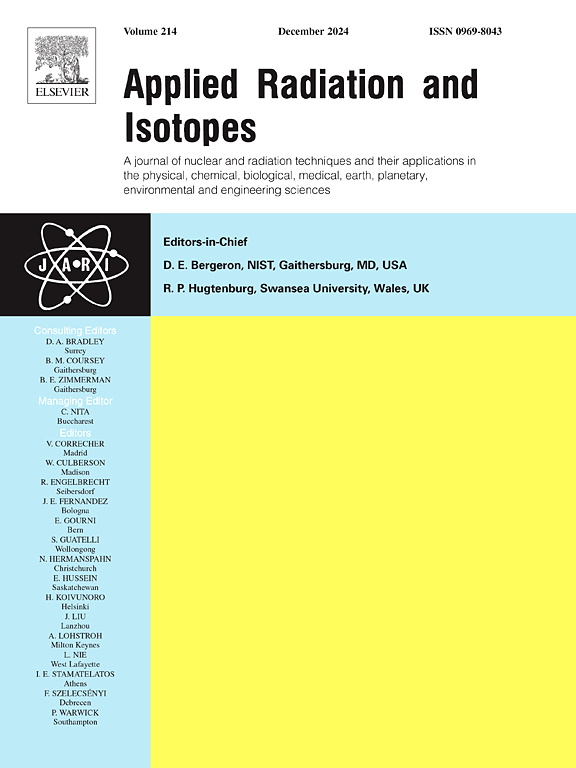Method for determining primary radiation shielding thickness of industrial X-ray-generating devices
IF 1.6
3区 工程技术
Q3 CHEMISTRY, INORGANIC & NUCLEAR
引用次数: 0
Abstract
The United States National Council on Radiation Protection and Measurements (NCRP) and American National Standards Institute (ANSI)/Health Physics Society (HPS) reports typically are used as references during shielding evaluations of industrial X-ray-generating devices (XGDs). Considering the early date of publication of these reports, the types of some of the x-ray generators used in their experiments (i.e., generators for diagnosis, not industrial applications), the lack of available voltage types, and the non-intuitive application of the formulae, it is necessary to validate and improve the existing evaluation methods and data in consideration of the characteristics of industrial devices that are widely used today. To this end, we selected a representative industrial X-ray generator and measured its dose rate using a dose-rate meter with varying lead shielding thicknesses and tube voltages. By statistically analyzing the relationship between these variables, new formulae for shield-thickness evaluation according to fine tube-voltage increments, along with all of the related data, were derived. By using the information obtained in this study, the required lead thicknesses for industrial XGDs can be determined at different tube voltages in order to satisfy users’ dose-rate requirements and ensure the radiation safety of workers.
工业x射线产生装置初级辐射屏蔽厚度的测定方法
美国国家辐射防护和测量委员会(NCRP)和美国国家标准协会(ANSI)/健康物理学会(HPS)的报告通常被用作工业x射线产生设备(xgd)屏蔽评估的参考。考虑到这些报告发表的时间较早,实验中使用的一些x射线发生器的类型(即用于诊断的发生器,而不是工业应用的发生器),缺乏可用的电压类型,以及公式的非直观应用,有必要考虑到目前广泛使用的工业设备的特点,验证和改进现有的评估方法和数据。为此,我们选择了一个具有代表性的工业x射线发生器,并使用不同铅屏蔽厚度和管电压的剂量率计测量其剂量率。通过统计分析这些变量之间的关系,导出了基于细管电压增量的屏蔽厚度评估新公式,以及所有相关数据。利用本研究获得的信息,可以确定不同管电压下工业xgd所需的引线厚度,以满足用户的剂量率要求,确保工人的辐射安全。
本文章由计算机程序翻译,如有差异,请以英文原文为准。
求助全文
约1分钟内获得全文
求助全文
来源期刊

Applied Radiation and Isotopes
工程技术-核科学技术
CiteScore
3.00
自引率
12.50%
发文量
406
审稿时长
13.5 months
期刊介绍:
Applied Radiation and Isotopes provides a high quality medium for the publication of substantial, original and scientific and technological papers on the development and peaceful application of nuclear, radiation and radionuclide techniques in chemistry, physics, biochemistry, biology, medicine, security, engineering and in the earth, planetary and environmental sciences, all including dosimetry. Nuclear techniques are defined in the broadest sense and both experimental and theoretical papers are welcome. They include the development and use of α- and β-particles, X-rays and γ-rays, neutrons and other nuclear particles and radiations from all sources, including radionuclides, synchrotron sources, cyclotrons and reactors and from the natural environment.
The journal aims to publish papers with significance to an international audience, containing substantial novelty and scientific impact. The Editors reserve the rights to reject, with or without external review, papers that do not meet these criteria.
Papers dealing with radiation processing, i.e., where radiation is used to bring about a biological, chemical or physical change in a material, should be directed to our sister journal Radiation Physics and Chemistry.
 求助内容:
求助内容: 应助结果提醒方式:
应助结果提醒方式:


